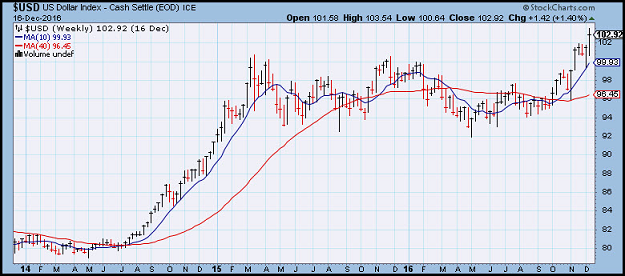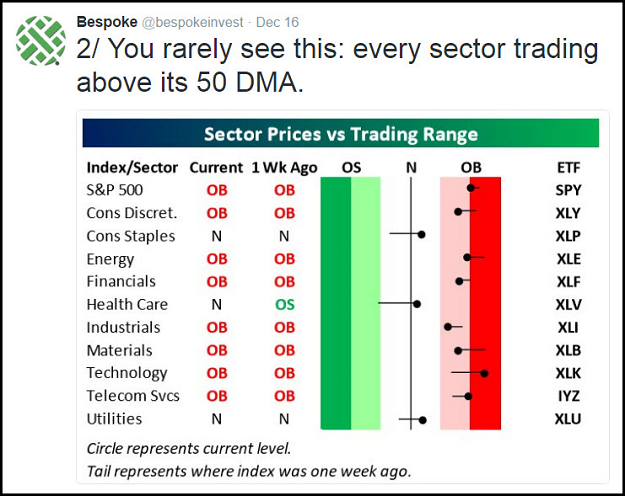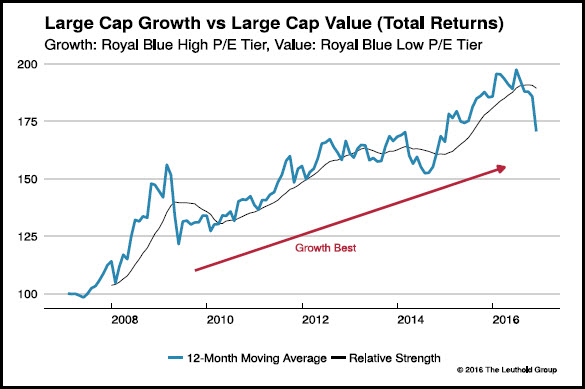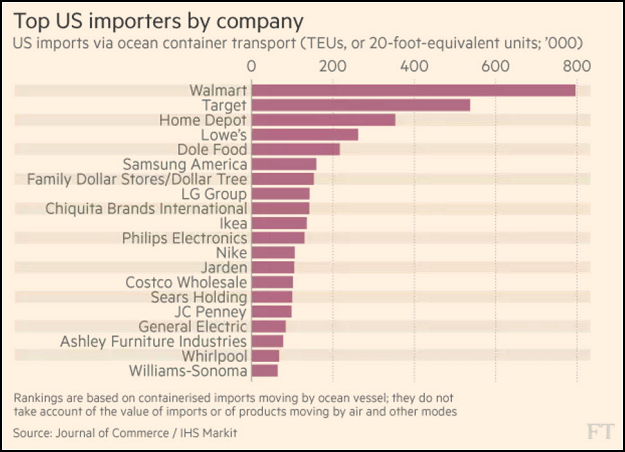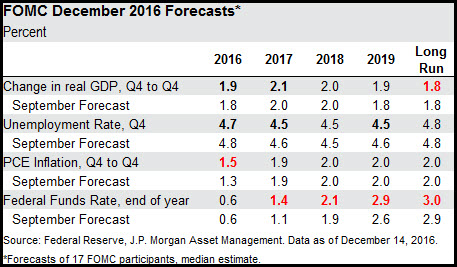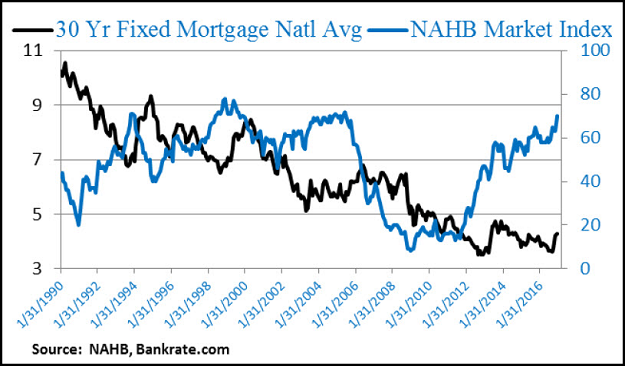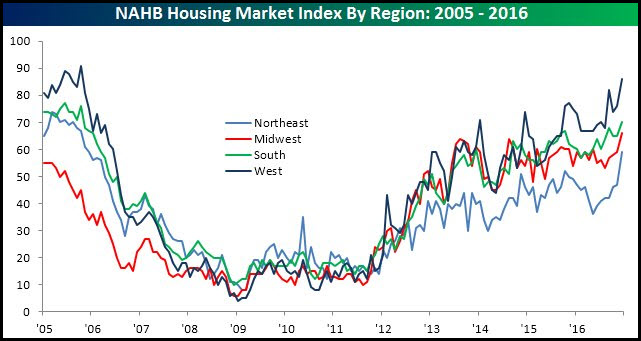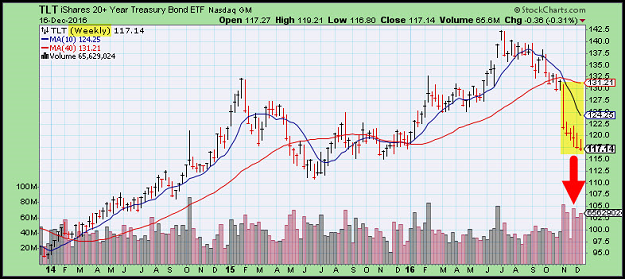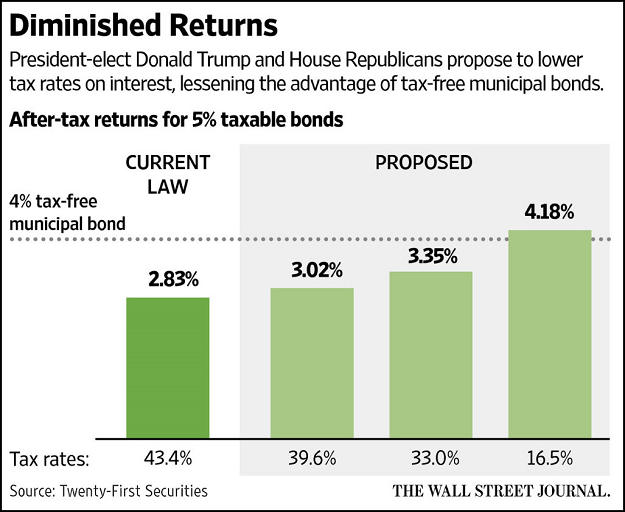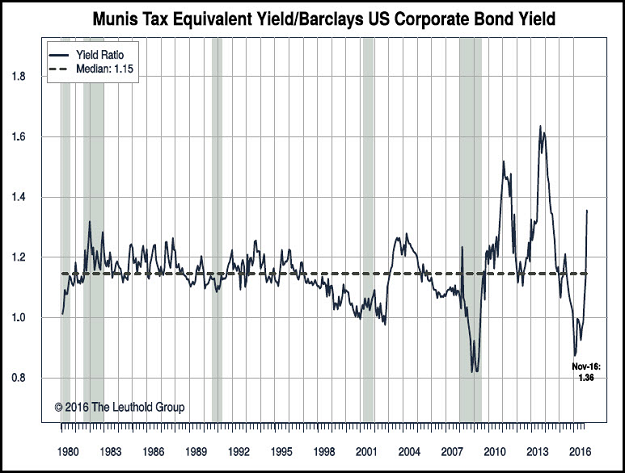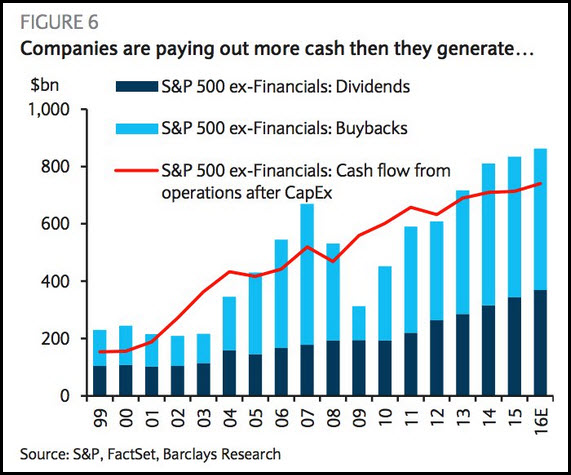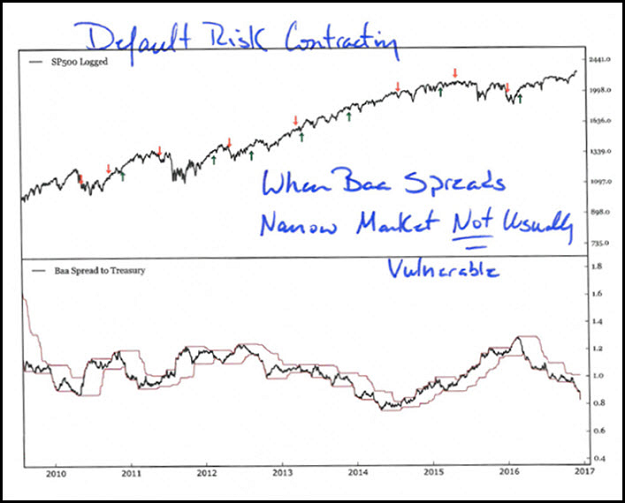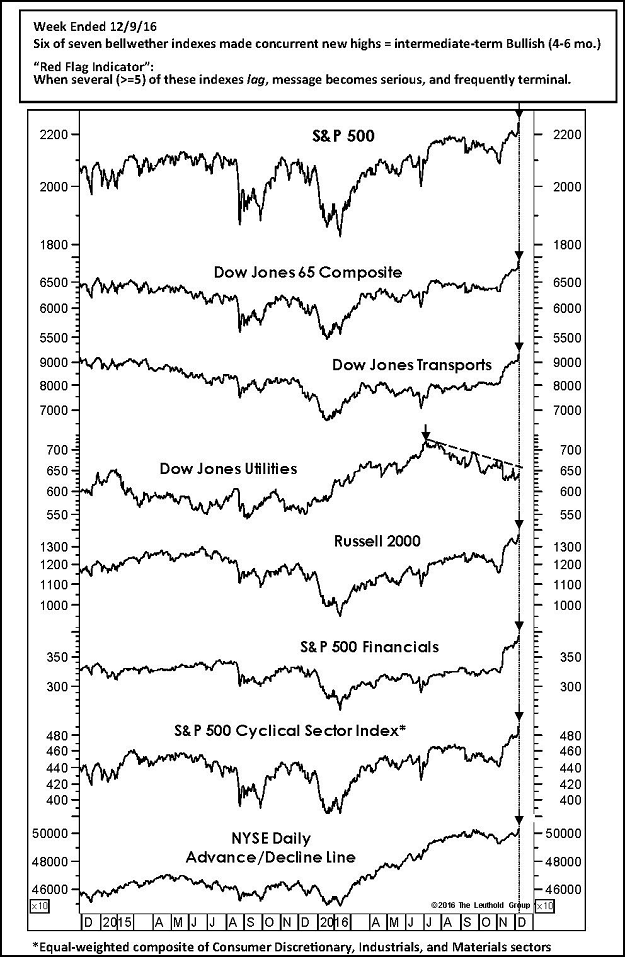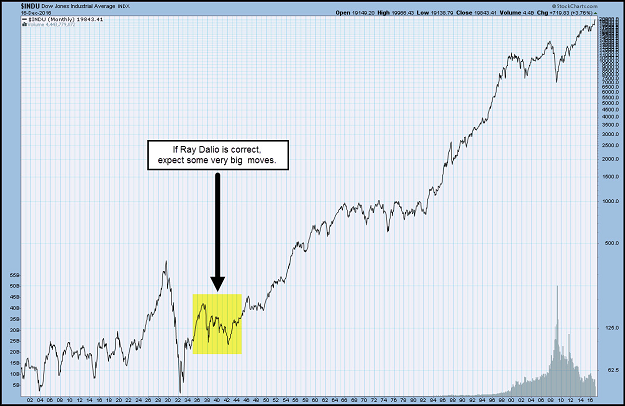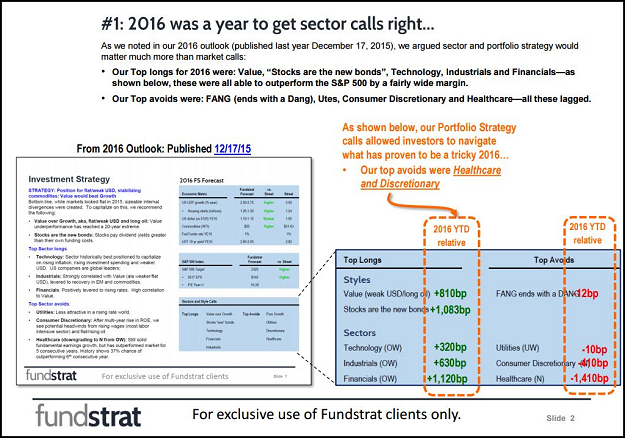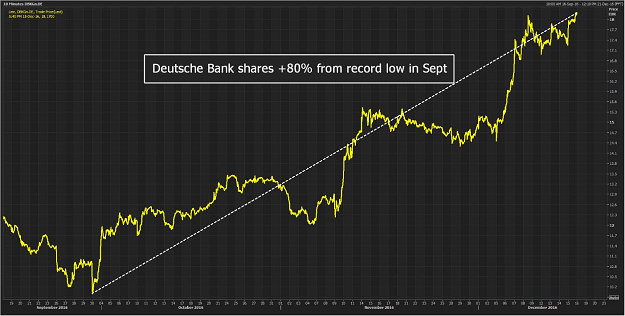by Blaine Rollins, CFA, 361 Capital
As we head into the final stretch of 2016, the U.S. dollar has taken control of the markets. As the incoming Trump administration continues to promise fiscal spending and tax cuts, the Fed is now positioning to do a bit more tightening—all while the U.S. and global economic datapoints move higher. The surge in the Philly Fed and NAHB (housing) data, coupled with much better manufacturing data out of Europe, led bond investors to sweat a bit further as they look for any signs that yields will retreat. The rise in yields has led to U.S. dollar strength which at some point will crimp U.S. multinational profits. (J.P. Morgan calculates that this quarter’s 6% lift in the U.S. dollar will hit S&P 500 earnings by 2-3% next year.) But many are looking past the negative fx impact and toward faster unit volume growth, and a reduction in corporate tax rates to pick up any weakness. It will be a very exciting earnings period. In the meantime, equity funds are seeing accelerating inflows, while bond funds see outflows, and at the same time the credit markets remain very healthy.
The U.S. dollar could not be beat last week. Some pros see more gains…
There’s a good chance the dollar could continue heading higher, if at a slower pace. Bank of America Merrill Lynch strategist David Woo notes that in the past, the combination of higher interest rates and more fiscal stimulus, such as Trump has proposed, was a recipe for continued dollar strength. “The political configuration in Washington makes us upbeat about the outlook for the U.S. dollar,” Woo says.
(Barron’s)
If you are nimble, you might be able to find a short counter trend trade in the market, but run it with a tight leash because broad strength like this typically leads to larger gains in the future…
What few are thinking, but totally possible…
Big Cap Growth crushed Big Cap Value from 2007 to 2015. Will 2016 be the first year of a new trend?
Once again, the market environment has become very favorable for stock pickers. Now is the time for them to be very aggressive and put up significant outperformance. If you are a CIO and you employ any closet indexers, lock them in a conference room and make them watch ‘300’ until you see rage in their eyes!
Despite the sharp decline in correlation among S&P 500 stocks, mutual funds have continued to lag in 2016. Since Election Day, average 3-month S&P 500 stock correlation has declined to 0.17, the lowest level since early 2007. Mutual funds have benefited from the cyclical rebound with 50% of large-cap core fund managers outperforming S&P 500 in 2H. However, YTD returns remain weak: Just 26% of core funds has outperformed the S&P 500.
(Goldman Sachs)
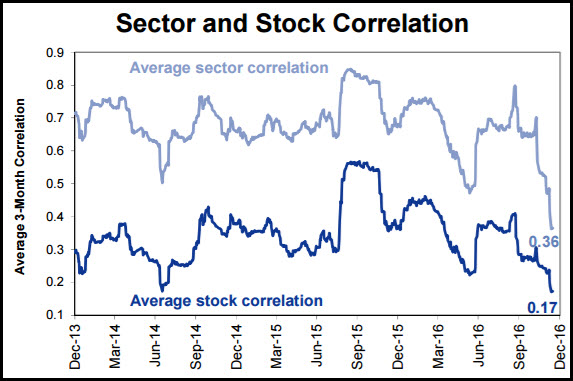
Even investors are ready to buy equity mutual funds again…
(@LizAnnSonders)
I know many who wanted to invest alongside Michael Burry (aka Steve Eisman) after reading/watching the ‘Big Short.’ Well now is your chance…
Steven Eisman, the strategist portrayed by Steve Carell in “The Big Short,” told CNBC on Monday he believes President-elect Donald Trump’s administration will roll back financial regulations.
Eisman, senior portfolio manager at Neuberger Berman, said he would be as “long as I can be” on financial stocks.
Eisman, whose bet against the subprime housing market prior to the 2008 financial crisis was depicted in the 2015 movie, told CNBC’s “Squawk Box” he was “a little bit schizophrenic” on the markets.
He said the Dodd-Frank financial regulations, put in place after the financial crisis, is “good law” that should not be changed. However, he said he understands that under the Trump administration, change is likely to come.
Eisman said bought the financial sector the day after the election and has invested more since then.
“I’m very long” the stock market overall, he added.
(CNBC)
An important hire in Washington D.C. over the weekend. If you have a contract with the U.S. Government, good luck…
He has been an advocate for spending cuts, often taking on his own party to push for more aggressive curbs to government spending.
“We are going to do great things for the American people with Mick Mulvaney leading the Office of Management and Budget,” Trump said in a statement. “Right now we are nearly $20 trillion in debt, but Mick is a very high-energy leader with deep convictions for how to responsibly manage our nation’s finances and save our country from drowning in red ink.
“With Mick at the head of OMB, my administration is going to make smart choices about America’s budget, bring new accountability to our federal government, and renew the American taxpayer’s trust in how their money is spent,” he added.
If you want to dig deeper, here is a list of the top 100 contractors with the Federal Government…
Many health care suppliers on the above list. A smart bet would be that the drug pricing model is about to snap…
Although list prices are continuing to rise sharply, pharmacy benefit managers have started to extract larger discounts and rebates, meaning the real price received by the manufacturer is lower.
In 2016, the list price of drugs rose by between 6 and 7 per cent, but net price inflation — after all the discounts were subtracted — was lower, at between 2 and 3 per cent, according to QuintilesIMS, the research group.
On the face of it, the market is functioning as it should. Pharmacy benefit managers amass big groups of patients — 85m in the case of Express Scripts — and use their clout to extract large savings from drug companies, which they pass on to their clients: employers and health insurers.
Theoretically, it should result in lower premiums for consumers.
But in fact it has resulted in much higher costs for patients because their “out-of-pocket” expense is still calculated using the list price, rather than the net price.
The import tax is also in the sights of the new Administration. U.S. retailers had better find any clothing or shoes made in the U.S.A…
With 98 per cent of clothes sold in the US made overseas, the National Retail Federation said the import tax could inflate the tax bills of some fashion chains to three to five times their pre-tax profits, jeopardising their solvency.
There was a FOMC meeting last week. Rates rose in December, as expected. Less expected was the projected shift in 2017 Fed Funds rates from 2-3 hikes to 3-4 hikes. Bond investors hated the news. U.S. Dollar investors loved it.
Both the Philly Fed and the NY Empire data showed a big jump in Capex spending intentions…
Interest rates might be higher, but last week’s NAHB survey showed a significant jump anyway as confidence builds with homebuyers…
(JonesTrading)
By region, they all jumped. Wonder what the split on Red state versus Blue state was?
(@bespokeinvest)
Some solidly positive data out of big Europe manufacturing also…
And with all of the better-than-expected big data and the FOMC comments, the ruthless selling in bonds continued…
Look at that sizable selling in the Bond ETF.
Brutually cold out this weekend as nat gas was -9% and retail stocks -4% last week. But dig out the flip flops as easterners are looking at much warmer temps for January 2017…
High confidence in much above-normal temperatures across the East in early January
(NOAA)

A must read in Barron’s on upcoming tax changes…
Go buy the full magazine if you don’t subscribe already because this one article will pay for itself many times over.
Given the potential changes to income-tax rates, what should individuals be doing now?
We’re recommending the same things we recommended back in 1986 when the Tax Reform Act lowered individual rates. The smartest thing to do is accelerate deductions into the current year when they will be deductible at higher tax rates and defer income until future years when it will be taxed at lower rates. Specifically, you should think about accelerating charitable contributions and prepaying state and local taxes. Pay them in December rather than in January. If you have stock-market losses, you ought to take them in 2016. You want to accelerate those losses and you want to defer gains.
How would you approach long-term capital gains?
While long-term gains are preferentially taxed, you still want to defer them until next year because, under the House plan, they will be taxed at even lower rates.
(Barron’s)
Under the new Administration, tax-free muni bonds will not be going away but their attractiveness will decline as personal tax rates fall…
(WSJ)
…Now if we only knew how much tax rates would fall, then we could more accurately take advantage of this severe pullback in Muni bond spreads…
No one is talking about slowing dividend growth yet, but it would seem to be in the cards for 2017 and beyond…
Assuming the fiscal and tax changes that we see in play, there should be a shift in corporate cash flow toward capex: 1) growing incentives for capex. 2) and disincentives to borrow (think about lower corporate tax rates reducing the advantages of debt and also the potential non deductibility of net interest expense for levered firms). Could dividend growth portfolios and strategies have difficulty finding names to own?
Credit markets suggests that appetite for equities has continued to increase…
(RenMac)
The Leuthold Group believes that a market top is not close based on their top gauges…
@LeutholdGroup: Imminent #market top = very low odds. $DJU the only bearish cog in Red Flag Indicator. Market peaks usually prefaced by >=5 index #RedFlags
Ray Dalio, founder, Bridgewater Associates, explains why the 1930s hold clues to what lies ahead for the economy…
Tom Lee destroyed the crystal ball this year. Nice work…
Speaking of outstanding calls, how about Dr. Damodaran’s +55% target price on Deutsche Bank on October 3rd?
@AswathDamodaran
Our nominee for the worst company in the world…
There is a Pulitzer Prize fight going on between the L.A. Times, The Wall Street Journal and The Washington Post to cover the Opioid epidemic. We can only hope that even more newspapers, magazines and major networks join this specific Pulitzer-to-be topic. Be sure to go out of your way and read all of the great coverage on this terrible topic.
OxyContin is a dying business in America.
This is the third part of a Los Angeles Times investigation exploring the role of OxyContin in the nation’s opioid epidemic.
With the nation in the grip of an opioid epidemic that has claimed more than 200,000 lives, the U.S. medical establishment is turning away from painkillers. Top health officials are discouraging primary care doctors from prescribing them for chronic pain, saying there is no proof they work long-term and substantial evidence they put patients at risk.
Prescriptions for OxyContin have fallen nearly 40% since 2010, meaning billions in lost revenue for its Connecticut manufacturer, Purdue Pharma.
So the company’s owners, the Sackler family, are pursuing a new strategy: Put the painkiller that set off the U.S. opioid crisis into medicine cabinets around the world.
(LA Times)
At the opposite end of the ethical spectrum, a great company using science to do good in the world…
Using leaves, stems, banana peels and other fresh plant materials left behind after fruits and vegetables are picked or processed, Apeel has developed a method for creating imperceptible, edible barriers that the company says can extend the life of produce like green beans and berries by as much as five times. Apeel can even deliver a day-of-the-week bunch of bananas, each ripening on a different day.
An Apeel product already has been used to stretch the shelf life of cassava in Africa.
“It takes 30 days to get blueberries grown in Chile to market in the United States, which means they have to be picked before they’re ripe and shipped under heavy refrigeration,” said James Rogers, the founder and chief executive of Apeel. “We can change that.”
If the product performs as advertised, it could bring sweeping changes to the produce industry and grocery aisles. It could reduce food waste and the use of pesticides and increase the varieties of fruits and vegetables available.
(NY Times)
Great news if you have a high schooler under your roof…
Fewer high school grads, an improving economy and past, aggressive tuition hikes will make it easier for them to get into their favorite college.
Four-year private, nonprofit schools, many of which rely heavily on tuition dollars for revenue, posted a 0.6% decline, with 3.79 million students. About half that decline came among the smallest schools—those with fewer than 3,000 students, and for which each student’s enrollment is critical.
“The trend of prices continuing to rise faster than inflation is beginning to have more and more of an impact on enrollments, especially among low-income and first-generation students,” says Jamie Merisotis, president and CEO of Lumina Foundation, a nonprofit aiming to increase college attainment. He says affordability concerns are outweighing projections about the economic benefits of a college education.
Adding to the pain at many colleges is a dearth of new students fresh from high school. Schools in mid-Atlantic and Midwestern states reported the sharpest declines this year, reflecting the shift in population centers away from traditional industrial centers and toward the south and southwest.
(WSJ)
Copyright © 361 Capital






